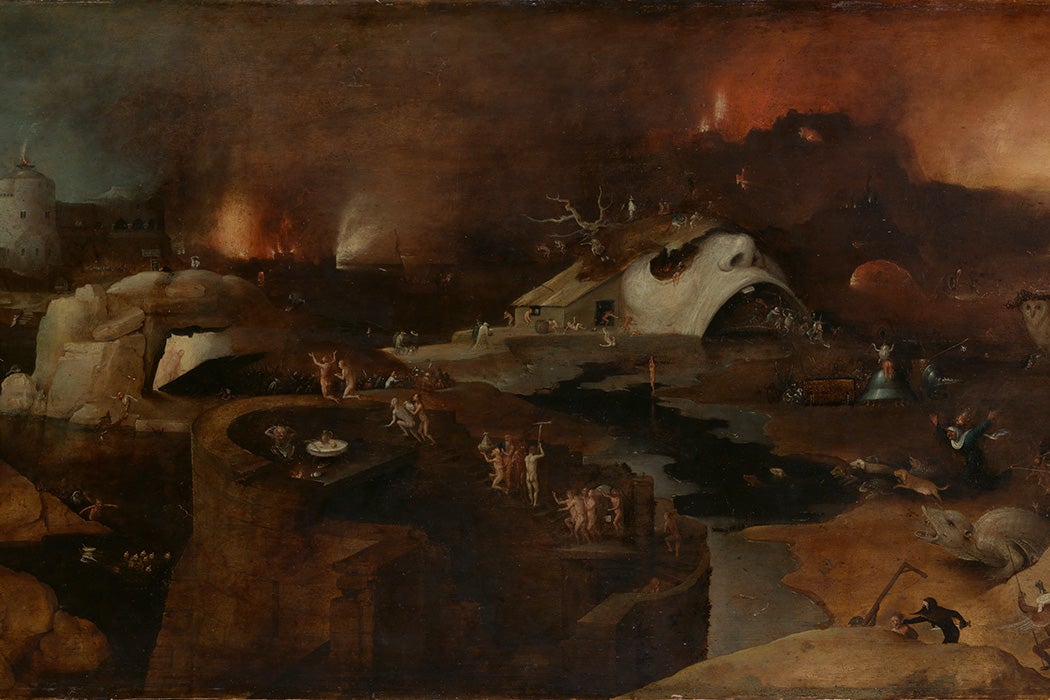In 1927, Bertrand Russell, the Nobel Prize–winning philosopher, delivered a lecture entitled “Why I Am Not a Christian.” Later published in essay form, the work asserts something many people prefer not to consider: “there is great injustice, and often the good suffer, and often the wicked prosper, and one hardly knows which of those is the more annoying….” Christianity, Russell says, proposes a solution to this problem: the afterlife. The modern, Christian idea of the afterlife suggests that upon death, a soul travels to either heaven or hell. This construct does what this world cannot—it brings about justice. It’s difficult to dispute the simple elegance of such a system. These concepts are so ingrained in fact, we tend to think that they’ve always existed. But this isn’t at all the case. The conception of the Christian afterlife underwent fundamental changes over the centuries, and heaven and hell as unique post-mortem destinations were never part of the faith’s origins.
Dating somewhere between the years 50 and 150 CE, the New Testament only includes mention of an afterlife, as we conceive of it today—as happening after the resurrection. Its idea of what comes after death focuses on a distant future, when those who have perished are reanimated and their dormant souls are reunited with their bodies. In other words, the dead remain so until the Second Coming.
Weekly Newsletter
But what role does the life one has led play in all of this? Will both the wicked and the good be resurrected? Will they enjoy the same eschatological fate? The New Testament offers three different conceptions of resurrection, each providing a different answer to this question.
The first is that of John and Paul. John states, “If a man does not abide in me, he is cast forth as a branch and withers,” (15:6). And Paul, in his Epistle to the Romans (9:22), asks, “What if God, although choosing to show his wrath and make his power known, bore with great patience the objects of his wrath—prepared for destruction?”
The idea here is one of annihilation: one day, the just will be resurrected and received by God. Offenders will be denied this fate. Death for them is final.
The second conception delivers universal salvation: all will rise on the day of judgment. This idea appears in Corinthians, Timothy, and Colossians. (While Corinthians, for example, is believed to have been written by Paul who supports annihilation, certain scholars think that some of his verses point to this second conception.) Offenders may suffer some kind of punishment, but God will save sinners and good men alike.
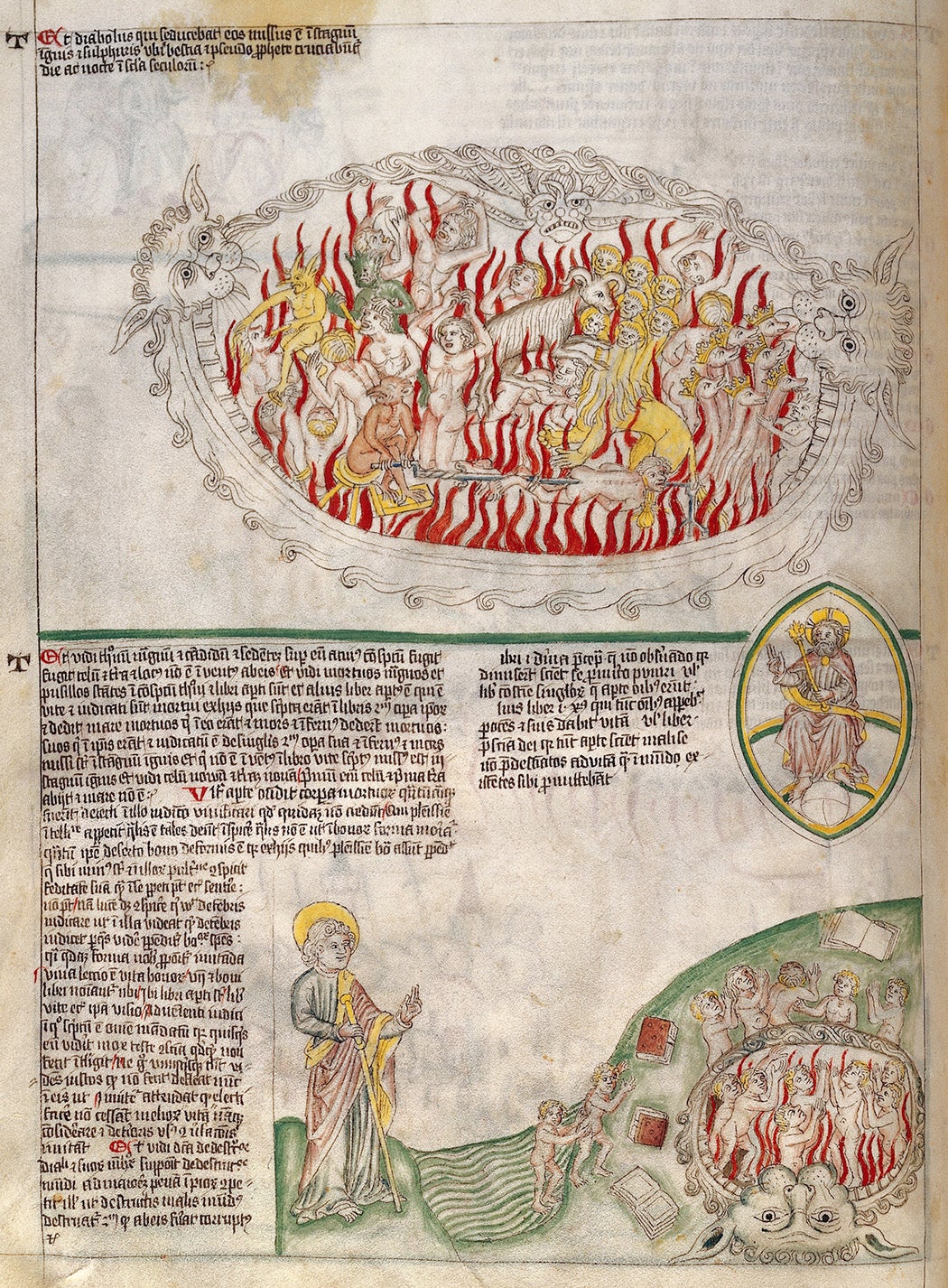
The third conception, drawn from the Synoptic Gospels (Matthew, Mark, and Luke), embraces damnation, and holds within it the seeds of the afterlife we know today. Jesus will return, everyone will be resurrected, and the evil will be made to suffer. As Matthew tells it, offenders are sent to “the outer darkness; there men will weep and gnash their teeth,” (25: 30).
Though absent from the very early days of Christianity, the understanding that a soul does go somewhere and lives forever became intrinsic to it. By the end of the first century most Christians, converted from Greco-Roman paganism, embraced this conception, which the Greek philosopher Plato had delineated before Christianity’s establishment. Within a century after Jesus’s death, this heaven and hell binary became the religion’s dominant paradigm.

Plato argued as early as the year 360 BCE in the Phaedo that the soul is immortal, and that upon death, it leaves the body and moves on to another realm, outside the physical one. This celestial realm is a place of pure rationality, where perfect qualities such as equality and beauty—the “essence of true existence”—are located. The body, on the other hand, is essentially a prison preventing the soul from accessing that better realm. That is why Socrates, whose death Plato describes in the Phaedo, is content in his final hours. According to classics scholar Deborah Kamen, Nietzsche and others interpreted Plato to mean that life is a sickness; death its cure. That is, philosophy allows a person to focus on thinking and rationality while alive and thus to draw closer to the truth of the afterlife before death’s arrival. For that reason, philosophy is, as Plato puts it, “the practice of death.”
Christianity posits that Earth is small and offers a momentary pitstop on the way to God’s infinite truth, which resides elsewhere. This view is reflected in the writings of Augustine’s (b. 354 CE), which were influenced greatly by Platonism. “We must wholeheartedly desire and love [Godly] things and place no value on what is earthly and human,” he opined.
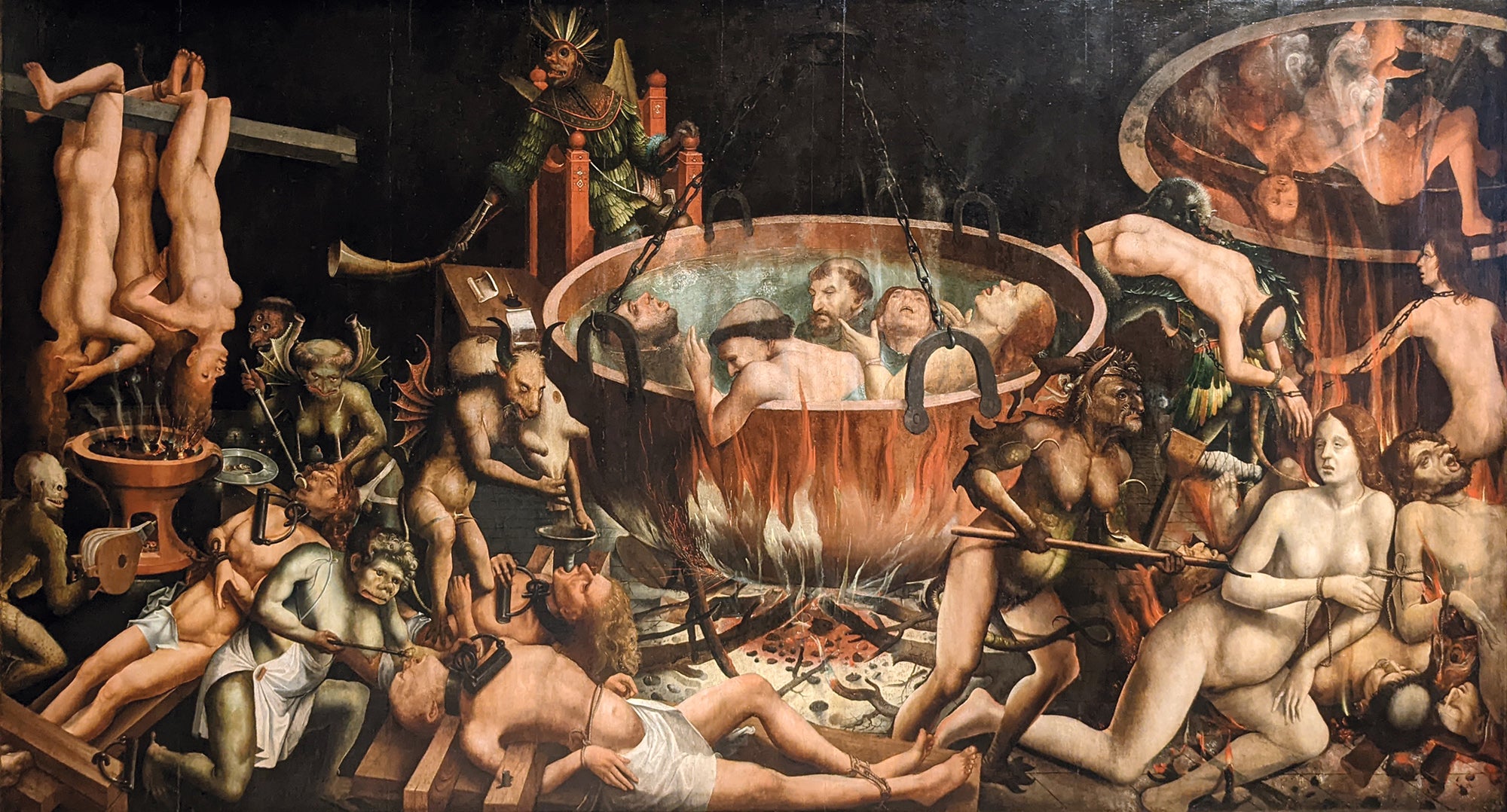
Having adopted Plato’s framework of the afterlife, Christianity then filled it with its own ideas. While it maintained that the soul traveled to another realm after death, that realm was not necessarily the one envisioned by Plato. Indeed, early Christianity included more than one version of the afterlife, and not all of them hinged on the heaven and hell dichotomy. John of Scythopolis, a sixth century Platonist Christian, for example, believed that the souls of a spiritual elite would enter a realm of pure intellect after death, while the souls of other people would simply remain inactive. He also believed that there were certain activities—like the ability to maintain or replicate the body—that the soul could perform only together with the body in the living world. Souls that existed in the afterlife independent of the body could not partake. As souls in the afterlife had only their intellect, they couldn’t process sensual images. These souls also possessed no memory of their past in the physical world.
Anastasius of Sinai, on the other hand, asserts in Questions and Answers that the soul can’t operate without the body and that it is comatose after death. Only when resurrection comes and body and soul are reunited, will a person be made whole again. At that time, everybody will look alike. “For there is definitely…no infancy and old age,” writes the 7th century theologian, and everybody, including those who died as women and children, will have the same face and body, those of Adam before the fall. This makes it impossible to recognize anyone. But there’s a workaround: God will bestow on the righteous a special grace allowing them to identify one another. This is their reward; unlike sinners, the righteous will reunite with loved ones. In such an eschatological system, with no heaven or hell, this reward may help people reconcile themselves to the problem of injustice and give them an incentive to be good.

The immortality of the soul in the afterlife and the existence of hell and heaven became fundamental elements of Christian doctrine within the first few centuries of the Common Era. Yet there were still multiple understandings of what this meant, as the church lacked the institutional and political power it needed to put forth a single vision at the time.
One version is found in a second-century text called the Apocalypse of Peter. Inspired by Aristophanes and Plato, it was, according to historian Alan E. Bernstein, “the first major Christian account of postmortem punishment outside the New Testament.” In fact, according to historian Dimitris J. Kyrtatas, the Apocalypse is the first text that presented readers with a Christian vision of hell that resembles the one we know today. In it sinners are tortured in myriad ways—“hanging by their tongues, their necks, their hair or their thighs. They are cast into pits filled with excrement or venomous beasts.”
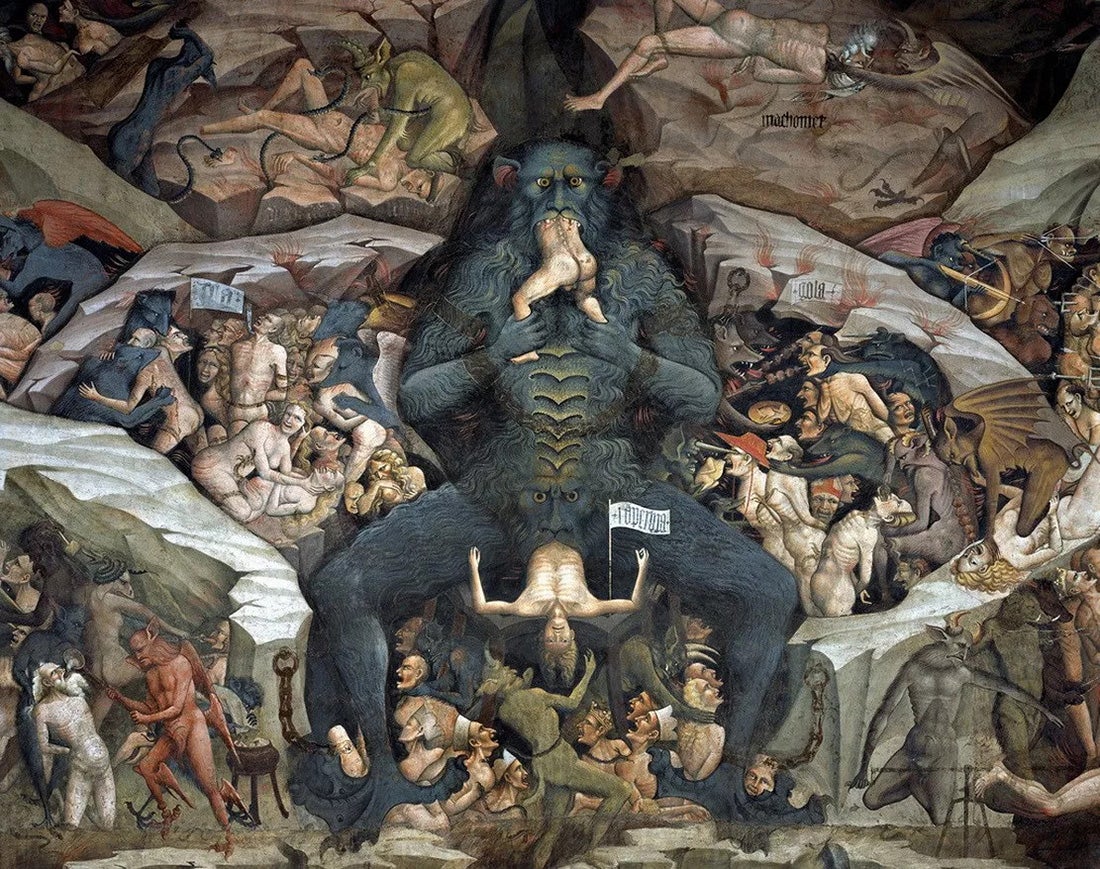
The Apocalypse is especially interesting because its hell, though similar in appearance to modern conceptions, had a very different goal. The text states that the fate of the righteous is to enter God’s kingdom. Everybody else will be punished. Early versions of the Apocalypse suggested that the righteous can choose to save the damned, and, in any case, eventually all sinners will be saved by Christ (a fact that must be kept secret, so as not to encourage sin). Hell is seen here as a “purifying element,” paving the way for salvation. A few hundred years later, when the idea of hell as a place of eternal torment became prevalent, the text was changed accordingly. There was no longer a way out.
The Apocalypse of Paul and other texts offered versions of hell that rivaled the one in the Apocalypse of Peter. Yet no vision dominated until Dante offered up his intricate, graphic, poetically powerful one in the 14th century in the Inferno section of the Divine Comedy. Dante’s conception of hell compelled Church authorities, who adopted it, and according to scholar Peter S. Hawkins “the profusion of illustrated manuscripts and commentaries that began to appear almost immediately after its completion suggests the extent to which the Commedia was treated like Scripture early on.” Dante’s story was frightening, cinematic and universal; he “made eternal punishment exotic and real, as well as Christian,” says Jon M. Sweeney, and created “the elaborate architecture of Hell that most people know today.”
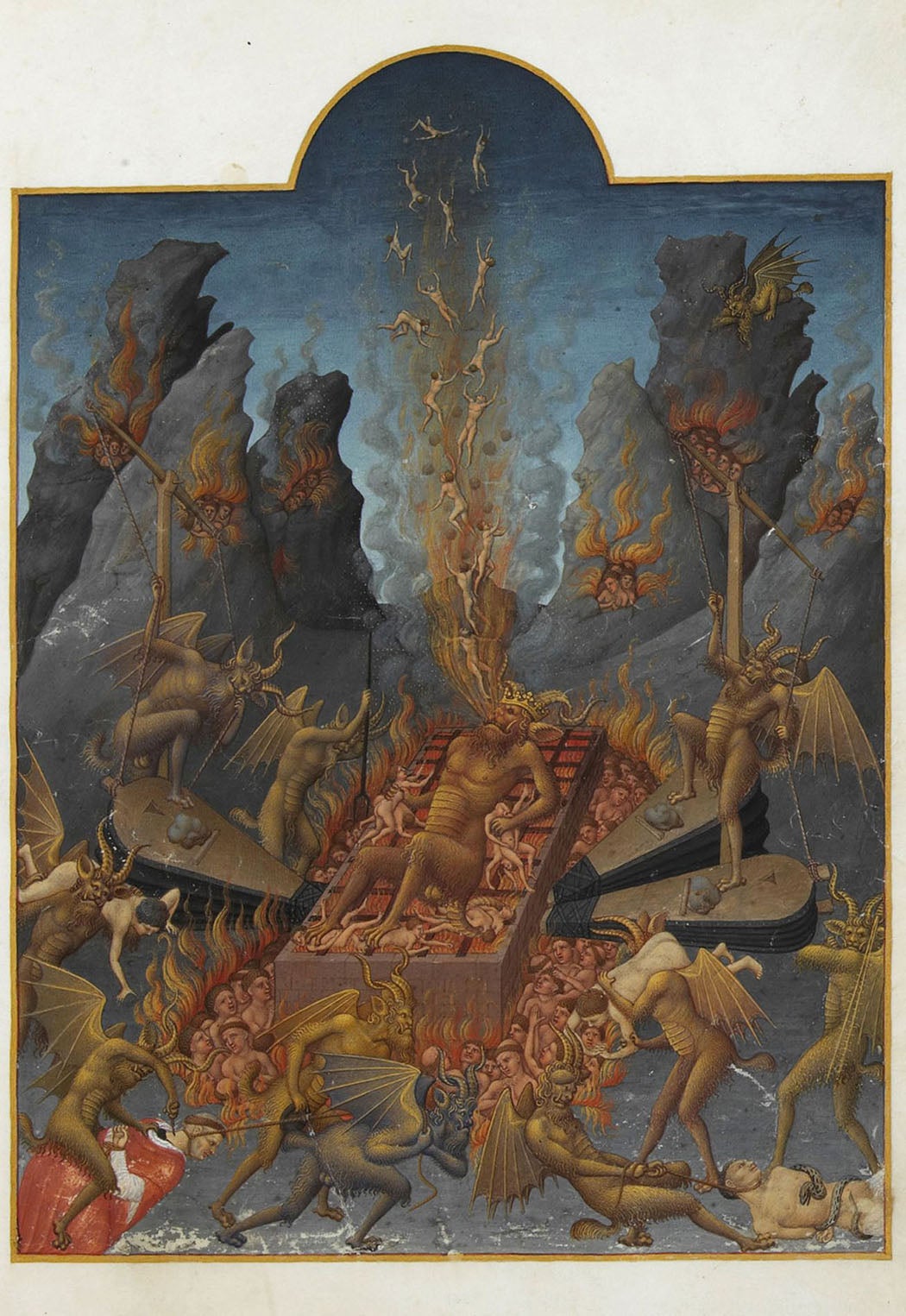
In his work, Dante is both protagonist and narrator, touring hell, purgatory, and paradise. Shaped like a funnel, Dante’s hell consists of nine circles. The worse the sin the lower the sinner is located in this configuration. Satan resides at the very bottom, in the earth’s center. The punishments of the many sinners Dante meets follow the principle of contrapasso, wherein the punishment reflects the sin. The heads of astrologers, for instance, are twisted around so they can’t see forward, since they pretended to be able to do so in their lifetimes.
Just as Plato influenced early notions about the fate of the soul after death, the Greco-Roman world also influenced Dante. The poet Virgil is his guide and mentor on his journey. Limbo, hell’s first circle, is populated by ancient Greek and Roman pagans who are barred from entering heaven. In hell, Dante sees souls on the beach of the river Acheron, one of five rivers of the Greek underworld, while Charon reaches the shore by ferry and collects the dead. Greek elements are molded to fit into a Christian worldview, yet the overtness of pagan elements such as these in a text that is part of a religion that denounces paganism is surprising.
As concepts, the afterlife and hell were given meaning by adopting ideas from Greek philosophy and literature, as well as through pure literary invention. Christianity is now the faith of billions of people worldwide. One of the main reasons for its success is its viscerality. In Canto 33 of the Inferno, Dante encounters Count Ugolino, who savagely gnaws on the head of the Ghibelline bishop:
“That sinner raised his mouth from his fierce meal,
then used the head that he had ripped apart
in back: he wiped his lips upon its hair.”
Ugolino then tells Dante that he was locked in a tower with his sons before his death. They all slowly starved and the boys eventually asked him to eat them: “for you clothed us in this sad flesh—it is for you to strip it off.” Once they died he finally succumbed to his hunger.
Having finished his story “again he gripped the sad skull in his teeth, which, like a dog’s, were strong down to the bone.”
This would go on forever.
Support JSTOR Daily! Join our new membership program on Patreon today.
